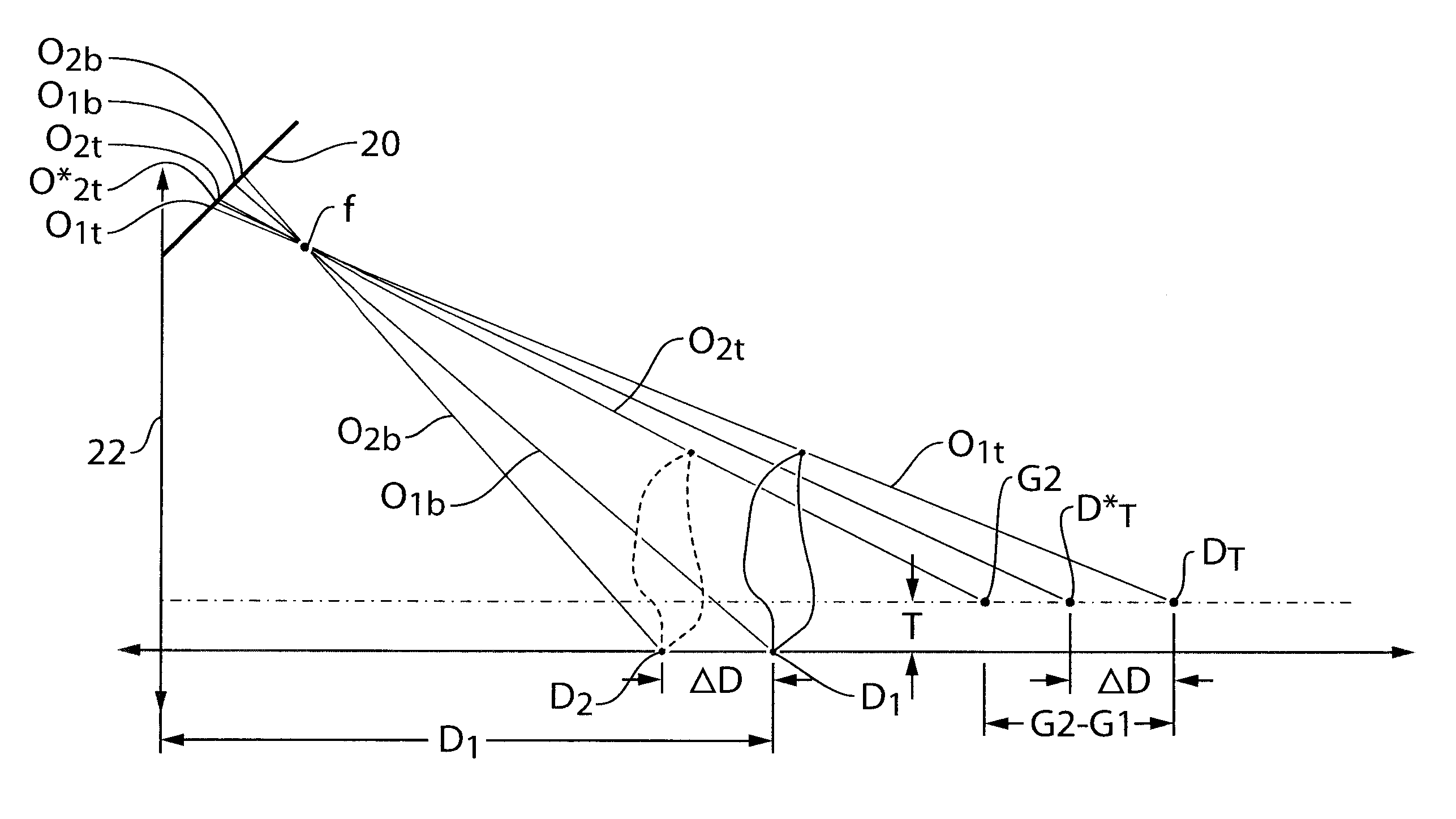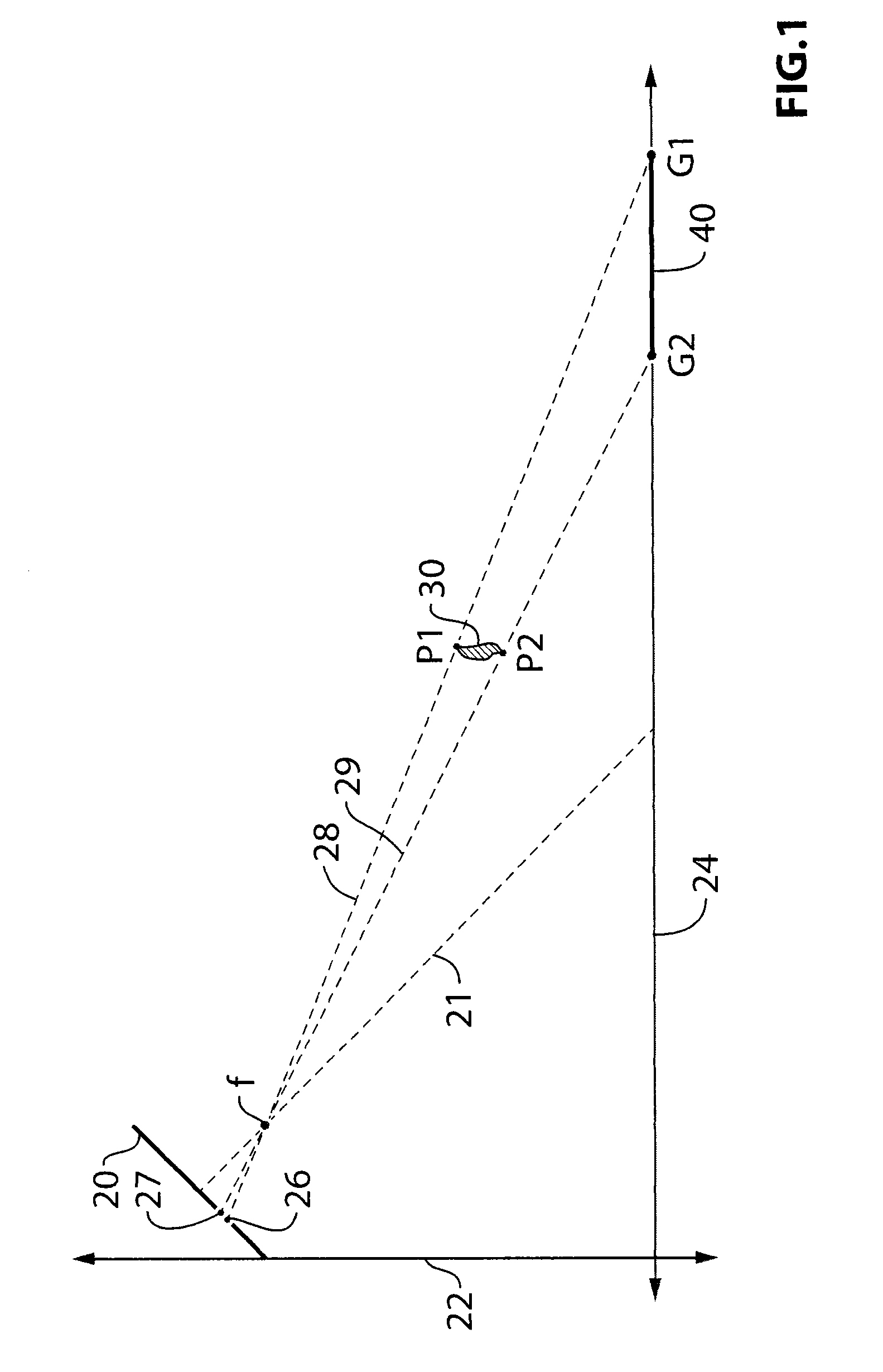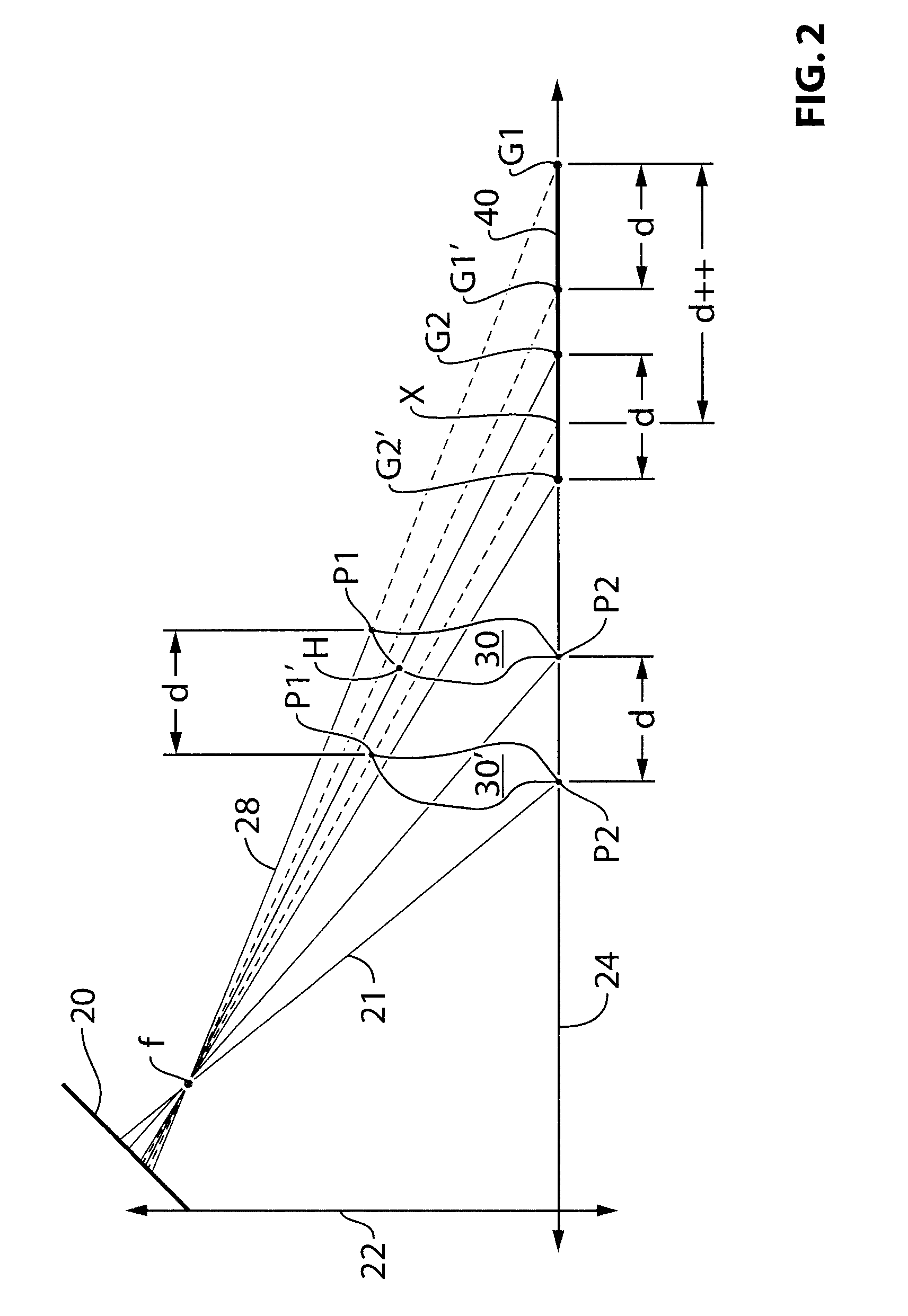Image processing method for detecting objects using relative motion
a technology of relative motion and image processing, applied in the field of image processing, can solve the problems of large computational resources required by systems, ungeneric, expensive and time-consuming processes, etc., and achieve the effect of large distance d++
- Summary
- Abstract
- Description
- Claims
- Application Information
AI Technical Summary
Benefits of technology
Problems solved by technology
Method used
Image
Examples
Embodiment Construction
[0030]For reference purposes, the following mathematical nomenclature is used in this description. A vector or a matrix is represented in bold face, while a scalar entity is represented in a regular face. The lower case is used to denote the dimensions and pixel locations in two dimensional image space. Thus, the collection of all the pixels in an image can be denoted as f and a pixel at column x and row y in the image f can be represented as f(x, y). The coordinates of a point in the three-dimensional world are represented using the upper case. A point on the ground can be represented in its vector form as X, or also as [Xw, Yw, Zw].
[0031]FIG. 3 shows a system block diagram of a preferred obstacle detection system 100. The inputs to system 100 include the image frames 102 from the vehicular camera (not explicitly shown) and vehicle CAN (controller area network) data 104 such as the instantaneous speed of the vehicle and its steering angle. In an overall system, knowledge of the veh...
PUM
 Login to View More
Login to View More Abstract
Description
Claims
Application Information
 Login to View More
Login to View More - R&D
- Intellectual Property
- Life Sciences
- Materials
- Tech Scout
- Unparalleled Data Quality
- Higher Quality Content
- 60% Fewer Hallucinations
Browse by: Latest US Patents, China's latest patents, Technical Efficacy Thesaurus, Application Domain, Technology Topic, Popular Technical Reports.
© 2025 PatSnap. All rights reserved.Legal|Privacy policy|Modern Slavery Act Transparency Statement|Sitemap|About US| Contact US: help@patsnap.com



